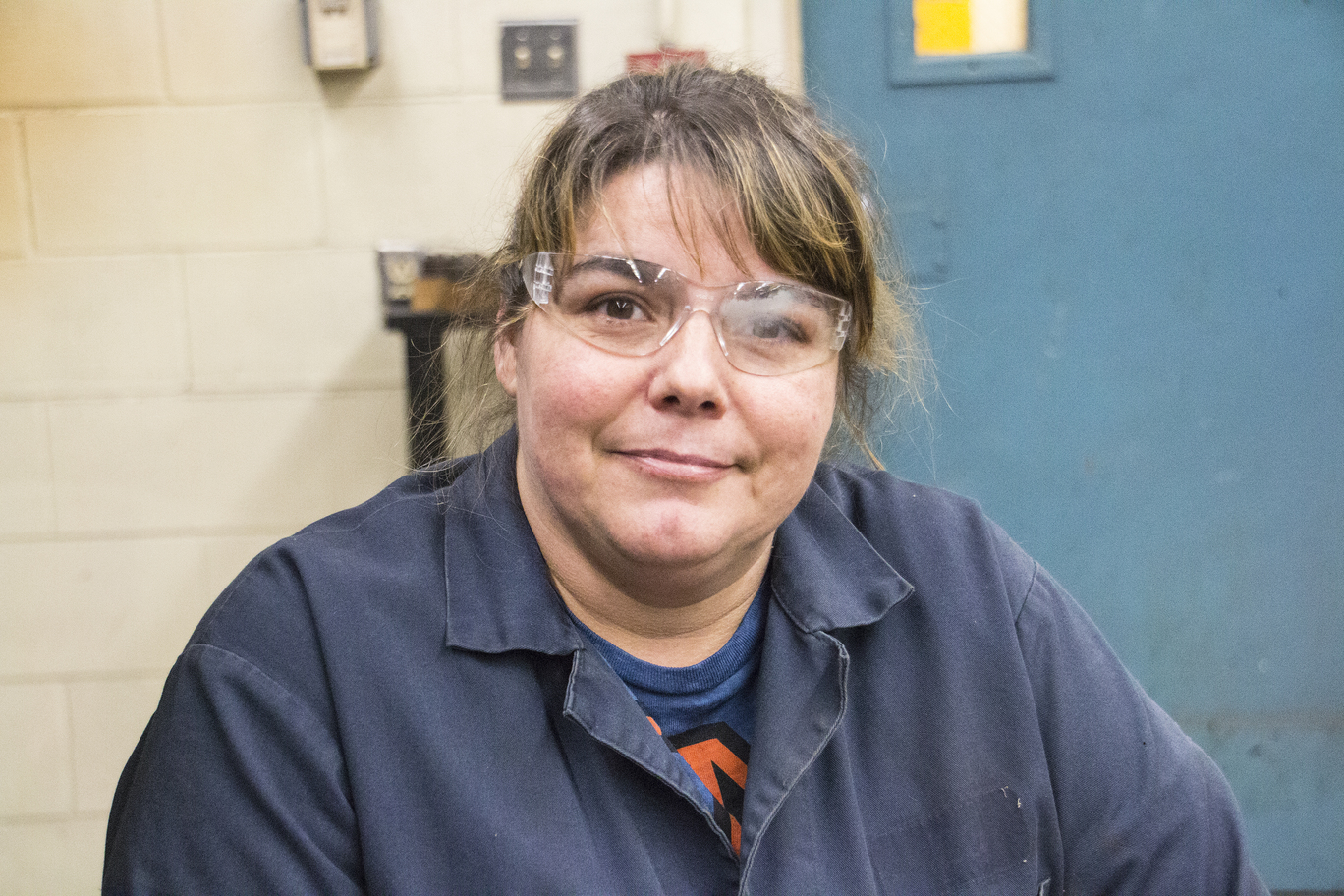 Beverly Sandoval grew up in Auburn, Washington, a small city south of Seattle where aerospace and manufacturing took flight after World War II. It’s a city that transformed from farming to industrial, which cultivated a new generation of blue collar workers to support Boeing’s growing demand for precision aerospace parts.
Beverly Sandoval grew up in Auburn, Washington, a small city south of Seattle where aerospace and manufacturing took flight after World War II. It’s a city that transformed from farming to industrial, which cultivated a new generation of blue collar workers to support Boeing’s growing demand for precision aerospace parts.
Sandoval, a soon-to-be graduate of the Aerospace Joint Apprenticeship Committee (AJAC) Precision Metal Fabrication apprenticeship program, was the oldest of three siblings. Growing up, Sandoval’s grandparents were an integral part of her upbringing to manufacturing. Her grandfather was a Boeing Tool & Die Maker for over 40 years, and her grandmother served in the fast-paced aerospace industry as a draftswoman, detailing technical drawings.
Sandoval started her manufacturing career with no prior experience. Her determination to start from the bottom laid the foundation for her relentless motivation to work in an industry where women are vastly underrepresented. “I think the hardest part for me is having to work extra hard to prove myself in a man’s world,” Sandoval said. “I would tell other girls to never give up no matter the obstacles. Just do your best.”
“I would tell other girls to never give up no matter the obstacles. Just do your best.”
The glass ceiling in manufacturing is real – especially for women who feel a constant pressure to prove themselves. More importantly, empowering females to join the manufacturing workforce will inevitably contribute to the growth of women in the industry. Today, Women make up 47 percent of the labor force, but only 27 percent of the manufacturing workforce. STEM initiatives from middle schools to technical colleges are making an impact on how women perceive an industry historically represented by men. But what will get this century-long problem over the hump?
One method to solving the gender-gap is women to surround themselves in an environment that feeds off creativity and mentorship. In return, this will motivate others to work in an industry that bases its premise on learning from others. Apprenticeships, the original four-year degree, offer the most comprehensive method for building technical and soft skills ─ while earning a livable wage and college credits. Sandoval has reached the top of her profession, but her journey has just begun.
After her completion of AJAC’s two-year Precision Metal Fabricator apprenticeship program, Sandoval will move onto the most rigorous program in manufacturing – tool & die making. This program requires 10,000 hours of structured on-the-job training coupled with over 700 hours of college-level classroom instruction.
By 2021, Sandoval will have two journey-level certificates ─ a testament that women are experienced, well-educated and most importantly, driven to succeed. Lastly, until manufacturers motivate more women to pursue this industry as a career, closing the gender gap will continue to be America’s number one challenge.
